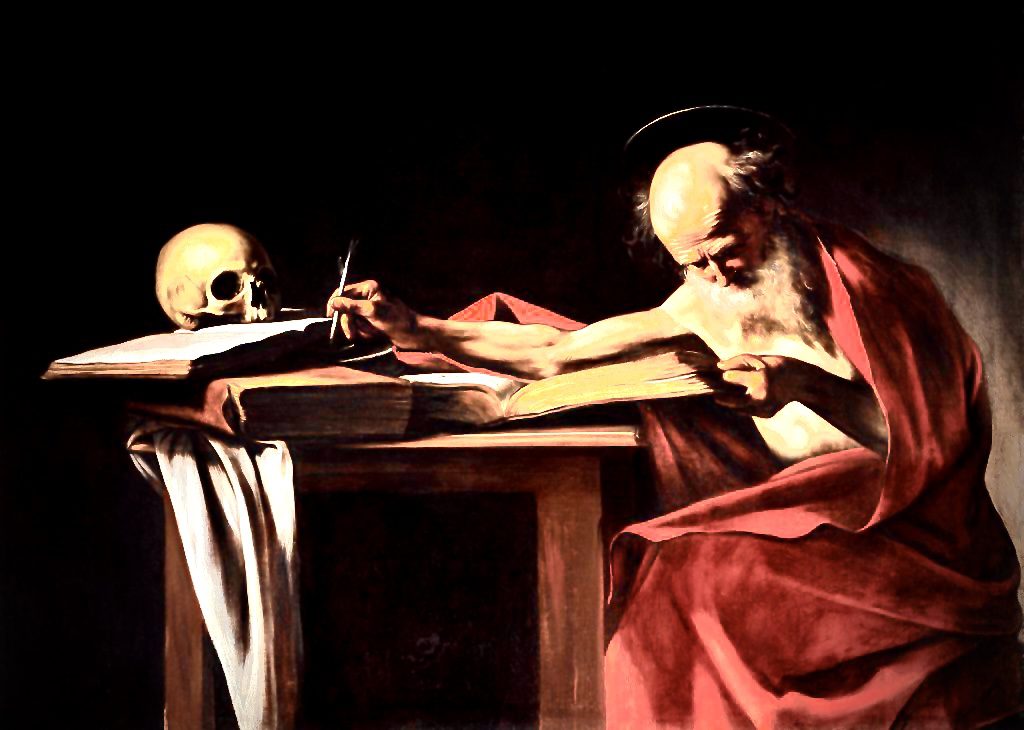The name of Saint Jerome illuminates the world of scholarship, translation, and theology, leaving an indelible mark on the Bible and its accessibility. Born in Stridon in 347, Jerome became a pivotal figure in Christian history, marked by an unwavering commitment to Biblical scholarship and the translation of sacred texts.
Saint Jerome's early days were defined by his thirst for knowledge and a desire to comprehend the intricacies of faith. Educated in Rome and well-versed in classical literature, he gravitated towards the Christian faith, experiencing a profound conversion. This transformation led him to embrace monastic life, nurturing a deep connection with God through solitude and study.
The Pursuit of Accuracy
Jerome's passion for learning extended to mastering languages. He recognized the significance of translating the Bible precisely from its original languages, Hebrew and Greek. Armed with linguistic prowess, he embarked on translating the Scriptures, striving to convey the authentic essence of the sacred texts to the Latin-speaking world.
The Profound Vulgate Translation
Saint Jerome's most enduring contribution was the Latin translation of the Bible, known as the Vulgate. Acknowledging the importance of offering an accurate and comprehensible version of the Bible, he toiled diligently to capture the subtleties of the original languages while ensuring accessibility. The Vulgate's impact was profound, shaping the theological landscape of Christianity for generations.
Controversies and Influence
Jerome's quest for accuracy faced challenges. His insistence on translating directly from the original sources sometimes clashed with prevailing interpretations. Nevertheless, his steadfast commitment to truth prevailed, leaving behind a legacy that prioritized accuracy over conformity.
Saint Jerome's legacy transcends time. His translation principles and scholarly insights serve as foundational pillars for subsequent Bible translations and scholarly endeavors. In an ever-evolving world, his work stands as a reliable guide for those seeking to faithfully understand and interpret the Word of God.
Modern Significance
In today's digital era, Saint Jerome's dedication to accuracy and accessibility holds renewed relevance. As contemporary readers navigate a plethora of Bible translations, his example serves as a reminder to prioritize faithful renderings that capture the essence of the original message.
Jerome's impact extended far beyond his time. Modern believers draw from his insights to enrich their grasp of the Bible and core faith principles. His legacy testifies to the enduring significance of dedicated scholarship and the pursuit of theological truth.
Shaping Theology: Jerome's Lasting Impact
Beyond his linguistic acumen and translation endeavors, Saint Jerome significantly influenced Christian theology. His commentaries and writings shed light on biblical texts and explored intricate theological themes. His insights paved the path for a deeper comprehension of fundamental Christian doctrines, leaving an imprint on theological discourse spanning centuries.
Jerome's meticulous scholarship ensured that his translations and interpretations carried weight within theological circles. His contributions clarified concepts like the Trinity, the nature of Christ, and the role of the Church. Consequently, his legacy extends beyond linguistic achievements, encompassing a profound influence on Christianity's theological foundations.
The life of Saint Jerome underscores his pivotal role in shaping our engagement with the Bible. His dedication to linguistic precision, scholarly rigor, and unwavering faith etch an enduring mark on Christian history. As we reflect on his legacy, we are reminded of translation's ability to bridge the gap between ancient wisdom and contemporary understanding. May his commitment to clarity and authenticity continue to inspire us as we explore the sacred texts that guide our faith.


![St. Jerome Laminated Prayer Cards 25 Pack [HPR457]](https://b960748.smushcdn.com/960748/wp-content/uploads/2023/08/HRP457-St-Jerome-Prayer-Card-600x600-1.jpg?lossy=1&strip=1&webp=1)
![St. Jerome Medal [EN6270]](https://b960748.smushcdn.com/960748/wp-content/uploads/2023/08/EN6270-St-Jerome-Medal-600x600-1.jpg?lossy=1&strip=1&webp=1)
![St. Jerome Medal [REE0091]](https://b960748.smushcdn.com/960748/wp-content/uploads/2023/08/REE0091-St-Jerome-Medal-600x600-1.jpg?lossy=1&strip=1&webp=1)
Can someone explain why St. Jerome is usually pictured mostly naked?